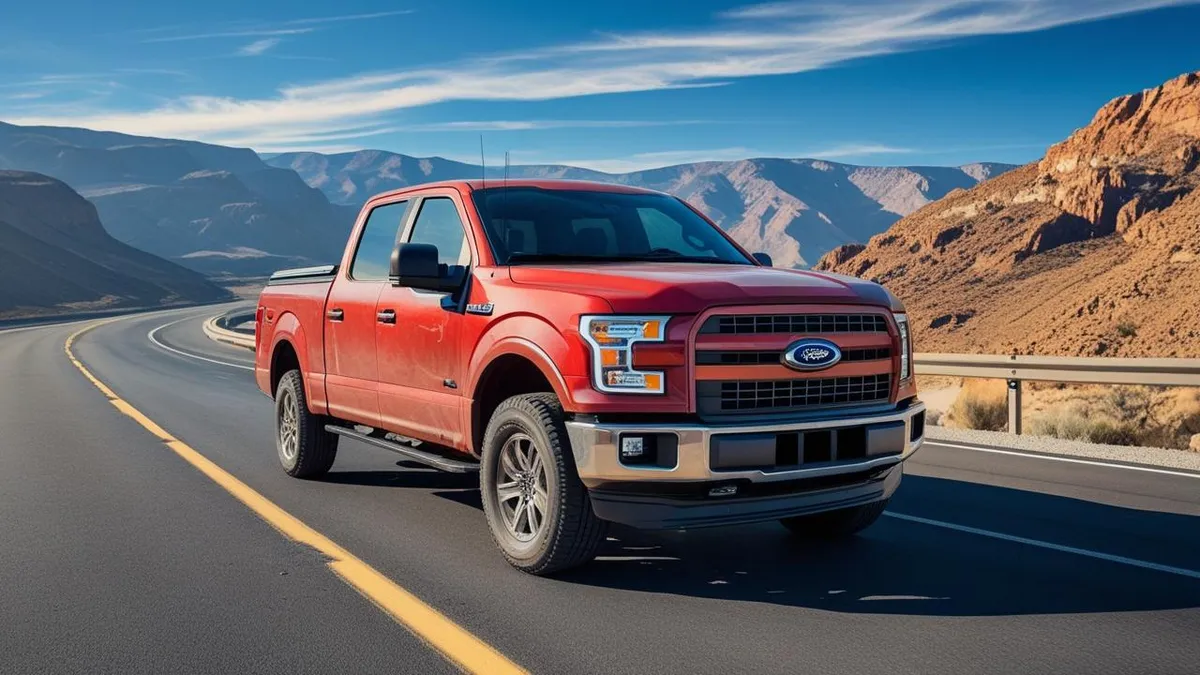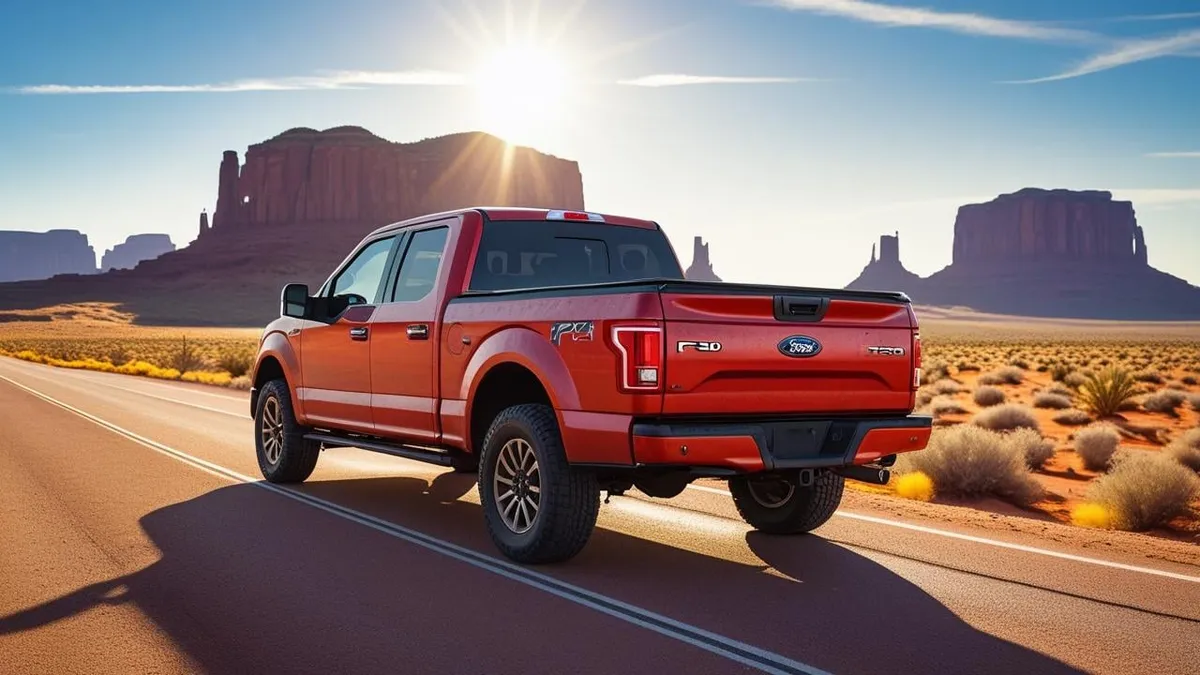I Drove 1,000 Miles with a Tonneau Cover—Here’s What Happened
As a truck owner, I’ve always been curious about whether a tonneau cover could live up to the hype of improving fuel efficiency, securing cargo, and enhancing my truck’s look. With gas prices fluctuating and long road trips on the horizon, I decided to put a tonneau cover to the test. I drove 1,000 miles with a tonneau cover installed on my Chevrolet Silverado, meticulously tracking fuel economy, cargo security, and overall driving experience. Here’s what happened, along with insights to help you decide if a tonneau cover is worth it for your truck.
Why I Chose a Tonneau Cover
Tonneau covers are marketed as a game-changer for truck owners, promising better aerodynamics, fuel savings, and protection for gear in the truck bed. I opted for a soft roll-up tonneau cover, compatible with my Chevrolet Silverado, due to its lightweight design and tool-free installation. My goal was to evaluate three key claims:
- Fuel Efficiency: Does a tonneau cover reduce drag enough to save gas?
- Cargo Security and Protection: Can it keep my gear safe and dry?
- Aesthetics and Functionality: Does it improve the truck’s look and usability?
To test these, I planned a 1,000-mile round trip from Dallas, Texas, to Denver, Colorado, a mix of highway cruising, city driving, and mountain roads, perfect for real-world conditions.
The Setup: Preparing for the Journey

Before hitting the road, I installed the soft roll-up tonneau cover. The process was straightforward, taking about 15 minutes with no tools, as advertised. The cover fit snugly over my Silverado’s 6.5-foot bed, creating a sleek, streamlined look. I loaded the bed with camping gear, tools, and luggage to simulate a typical road trip load, ensuring the cover could handle practical use.
To measure fuel economy accurately, I used an onboard diagnostic (OBD) tool connected to my truck’s port, paired with a smartphone app to log miles per gallon (MPG) in real time. I also reset the truck’s built-in MPG meter for cross-reference. For comparison, I had baseline MPG data from a previous 500-mile trip without the cover, averaging 16.2 MPG in mixed conditions (70% highway, 30% city).
The Journey: 1,000 Miles of Real-World Testing
Leg 1: Dallas to Amarillo (360 miles, mostly highway)
The first leg was primarily flat highway driving on I-40, with cruise control set at 70 MPH. The weather was clear, with minimal wind, ideal for testing aerodynamics. The OBD tool recorded an average of 17.8 MPG, a noticeable improvement over my baseline of 16.2 MPG. This 1.6 MPG gain translates to roughly a 10% increase in fuel efficiency, aligning with some manufacturer claims of up to 10% savings.
I noticed the truck felt slightly less “draggy” at highway speeds, likely due to the tonneau cover smoothing airflow over the bed. However, the improvement wasn’t dramatic, and I wondered if driving habits or conditions played a role. The cover kept my gear secure, with no signs of water intrusion despite a brief rain shower.
Leg 2: Amarillo to Denver (430 miles, highway and mountain roads)
This leg included a mix of highway driving and winding mountain roads as I approached Denver. Speeds varied from 60 to 75 MPH, with some stop-and-go traffic in urban areas. The OBD tool showed an average of 17.1 MPG, slightly lower than the first leg, likely due to elevation changes and city driving. Still, this was better than my baseline, suggesting the tonneau cover provided consistent aerodynamic benefits.
The cover proved its worth when I hit a snow flurry in the Rockies. My camping gear stayed dry and secure, a major plus compared to past trips where open-bed cargo got soaked. The roll-up design made it easy to access the bed when I needed to grab supplies, folding back in seconds without tools.
Leg 3: Denver to Dallas (210 miles out, then back)
For the final leg, I drove 210 miles toward Oklahoma City before turning back to Dallas, keeping conditions as consistent as possible with the outbound trip. The OBD tool recorded 17.5 MPG, reinforcing the trend of a 1-1.5 MPG improvement over my baseline. The cover continued to protect my gear, even during a dusty stretch in West Texas, where an open bed would’ve left everything coated in grit.
The Results: Breaking Down the Data

After 1,000 miles, here’s what the numbers and experience revealed:
Fuel Economy
- Without Tonneau Cover (Baseline): 16.2 MPG (500 miles, mixed conditions)
- With Tonneau Cover: 17.4 MPG average (1,000 miles, mixed conditions)
- Improvement: ~1.2 MPG, or roughly 7.4% better fuel efficiency
This aligns with studies suggesting tonneau covers can reduce drag by 4-7%, translating to 1-2% MPG gains in controlled settings, though real-world results vary. At $3.50 per gallon, the 1.2 MPG improvement saved about 4 gallons over 1,000 miles, or $14. While not a massive saving, it could add up over years of driving, especially for high-mileage truck owners.
Cargo Security and Protection
The tonneau cover excelled here. My gear stayed dry through rain and snow, and the lockable design deterred tampering when I parked overnight in Denver. Compared to an open bed, the cover offered peace of mind and kept my belongings clean, a significant practical benefit.
Aesthetics and Functionality
The sleek black cover gave my Silverado a polished, modern look, earning compliments at gas stations. The roll-up design was user-friendly, allowing quick access to the bed without removing the cover. Its lightweight construction (under 30 pounds) minimized any negative impact on fuel efficiency due to added weight, unlike heavier hard covers.
The Verdict: Is a Tonneau Cover Worth It?
After 1,000 miles, the tonneau cover delivered measurable benefits, but it’s not a miracle solution. Here’s my take:
- Fuel Savings: The 7.4% MPG improvement is notable but won’t offset the cover’s cost ($300-$600 for a quality soft cover) quickly unless you drive extensively. For example, at 12,000 miles per year, a 1.2 MPG gain saves about 30 gallons annually, or $105 at $3.50 per gallon. It would take 3-5 years to recoup the cost through fuel savings alone.
- Cargo Protection: This is where the cover shines. It kept my gear secure and dry, making it invaluable for road trips, outdoor adventures, or hauling valuable items.
- Ease of Use and Style: The tool-free installation and sleek design make it a practical and stylish addition to any truck.
If you’re considering a tonneau cover primarily for fuel savings, temper your expectations. The real value lies in cargo protection and aesthetics, with fuel efficiency as a nice bonus. For frequent highway drivers or those needing secure storage, a lightweight soft roll-up cover like Bison’s is a solid investment.
Tips for Maximizing Your Tonneau Cover’s Benefits
- Choose a Lightweight Cover: Soft roll-up or folding covers minimize weight penalties compared to heavy hard covers.
- Drive Smart: Maintain steady speeds (65-70 MPH) and use cruise control to maximize aerodynamic gains.
- Ensure Proper Fit: A snug fit reduces drag and prevents fluttering, which can negate benefits.
- Combine with Other Efficiency Tips: Keep tires properly inflated, avoid rapid acceleration, and remove unnecessary weight to boost MPG further.
- Maintain Your Cover: Regularly clean and check seals to ensure it remains weather-tight and secure.
Conclusion
Driving 1,000 miles with a Bison Tonneau Cover showed me that while fuel savings are real, they’re modest—around 1.2 MPG in my case. The true standout was the cover’s ability to protect my gear from rain, snow, and dust, all while adding a sleek look to my Silverado. If you’re a truck owner who values security and style, a tonneau cover is a worthwhile addition, with fuel efficiency as a small but welcome perk. For those interested in Bison Tonneau Covers, check out their range for Chevrolet, Dodge, Ford, GMC, Nissan, and Toyota trucks, all designed for easy, tool-free installation.
Disclaimer: Results may vary based on truck model, driving conditions, and cover type. Always conduct your own tests to confirm fuel economy improvements.